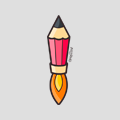There are no items in your cart
Add More
Add More
| Item Details | Price | ||
|---|---|---|---|
Wed Oct 18, 2023
Design thinking and user experience (UX) are critical to creating successful and user-friendly products and services. To begin the design process effectively, it's essential to frame a clear problem statement that serves as your North Star throughout the project. In this article, we'll break down the process of framing a design thinking or UX problem statement in simple, human-friendly terms.
The first step in framing your problem statement is to identify three key elements: the "who," the "what," and the "why."
Design thinking and UX are all about putting the user at the center of your efforts. Empathize with the users by conducting interviews, surveys, or observations. Gather real-life stories and experiences to ensure you truly understand their needs and pain points.
Now that you have a clear understanding of the problem, it's time to reframe it. Instead of stating the problem as you initially perceived it, try to rephrase it in a way that focuses on the user's perspective. For example, if you are working on creating mental health support for teenagers and your initial problem statement is "Provide mental health support to teenagers." You could reframe it as "Teenagers aged 13-19 (who) face limited access to age-appropriate mental health resources and support (what), which is essential to address their increasing mental health needs, reduce stigma, and promote their overall well-being (why)."
A good problem statement should be specific and actionable. It should guide your design process and provide a clear direction for finding solutions. Avoid vague or overly broad statements. Instead, focus on concise language that identifies the issue and what you intend to do about it.
Design thinking and UX are collaborative efforts. Involve your team, including designers, developers, marketers, and any other relevant stakeholders, in the problem statement framing process. Their diverse perspectives can lead to more well-rounded problem statements.
Once you've framed your problem statement, it's not set in stone. Throughout the design process, keep testing and iterating on it. As you gain more insights and information, your understanding of the problem may evolve, and that's perfectly fine. The key is to stay flexible and responsive to user feedback.
Framing a design thinking or UX problem statement is an essential step in creating user-centric and successful products or services. By understanding the who, what, and why, empathizing with users, reframing the problem, and maintaining specificity, you can set a clear direction for your design efforts. Remember, collaboration and flexibility are your allies in this process, so keep an open mind and be ready to adapt as you learn more. Ultimately, a well-framed problem statement will guide you toward innovative and user-friendly solutions.

Crayomi
Design Thinking and UX Design Education